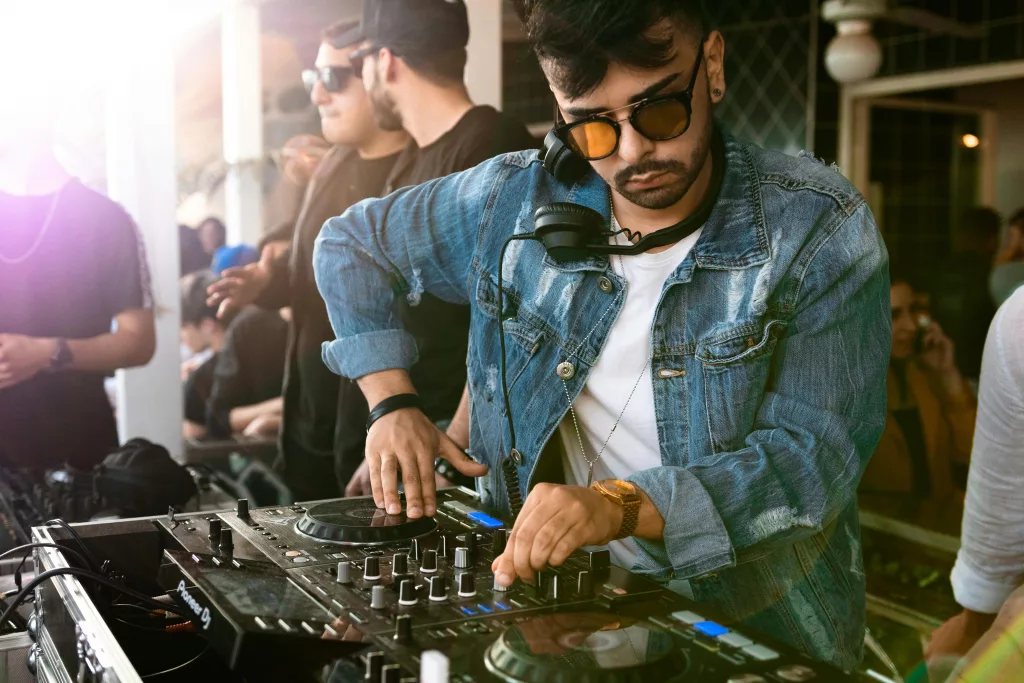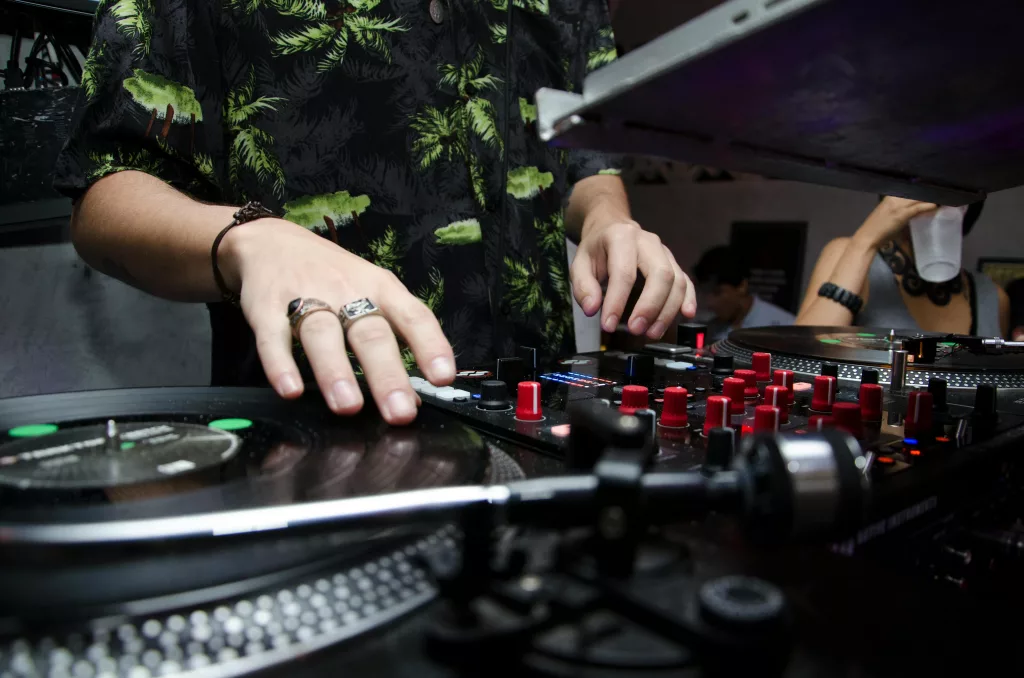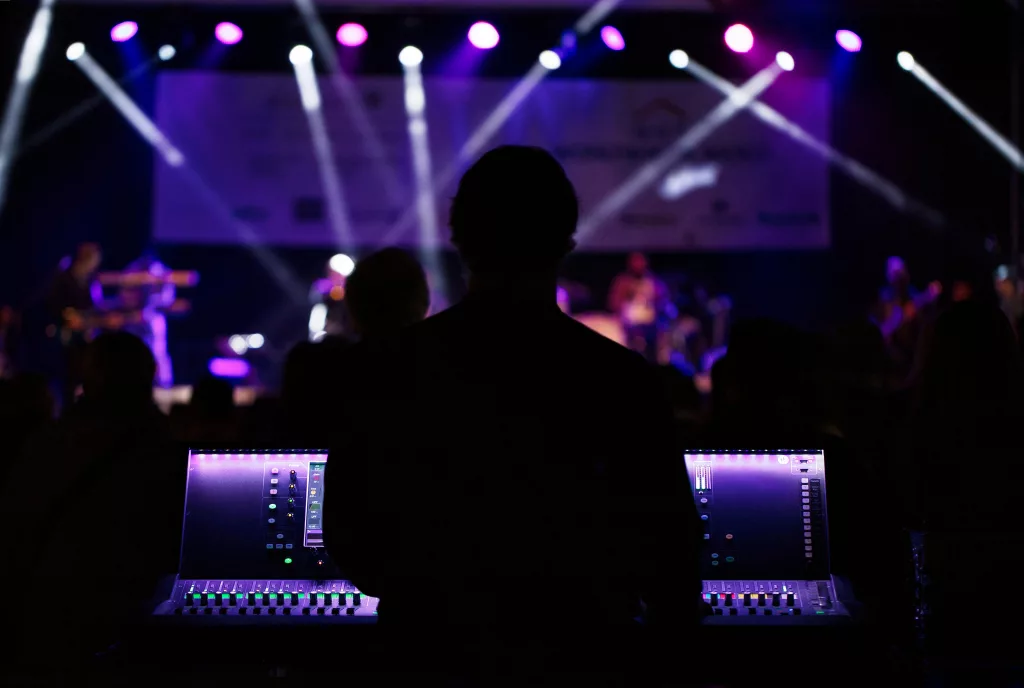DJing


DJing, acronym for Disc Jockey, is much more than just a profession – it is a dynamic art form that has shaped and will continue to shape the musical landscape from its humble beginnings to its current place at the heart of popular culture.
This article will therefore delve into the history of DJing, explore the different facets of this profession and examine its continuing impact on the global music scene.
The Emergence of DJing
DJing emerged in the 1940s, a time when vinyl turntables and radio broadcasts were becoming commonplace.
The first DJs, often called “selectors”, were responsible for choosing and playing records to entertain the crowds. At that time, the role of the DJ was more focused on selecting music than creating new work.
The Golden Age of DJing: The 70s and 80s
The 1970s marked a major turning point for DJing. The emergence of hip-hop in New York gave rise to DJs such as Grandmaster Flash and Kool Herc, who introduced revolutionary techniques such as scratching and breakbeat >.
Nightclubs and dance parties therefore became playgrounds for DJs, who began to influence musical style and street culture.
Technological Evolution
The advent of technology has brought substantial changes to DJing. Vinyl turntables were replaced by CD players, then by DJing software such as Serato and Traktor.
The use of MIDI controllers and pads added a tactile dimension to the performance. This therefore opened up new creative possibilities, allowing DJs to manipulate music in more complex ways.
Professionalization
DJing has evolved from an underground passion to a respected profession. Professional DJs are now featured in a variety of settings, from nightclubs to music festivals to corporate events.
DJ competitions and specialized schools have emerged to train the new generation of DJs, highlighting the growing importance of this profession in the music industry.
Styles and Techniques
DJing has diversified its styles over the years. DJs specializing in hip-hop, electro, house, techno and many more other genres emerged.
Mixing techniques have also diversified, from traditional beatmatching to creative mashup and live production. Each style and technique therefore brings a unique flavor to the DJ performance.


DJing and Music Production
The link between DJing and music production has become increasingly close. Many DJs are also producers, therefore creating their own tracks to integrate into their sets.
This dual skill allows DJs to leave their creative mark not only in their live performance but also in the music they share with their audience.
The Impact of DJing on Musical Culture
DJing has had a profound impact on global music culture. Iconic DJs such as Daft Punk, Carl Cox, and David Guetta have become iconic figures in the industry.
Music festivals such as Tomorrowland and Coachella feature line-ups made up of renowned DJs. DJing has therefore helped to create a culture where electronic music is at the center of the musical experience.
Future Challenges and Developments
While DJing has seen considerable success, it is not without its challenges. Market saturation, the pressure to stay on top of the latest music trends and the need to stand out in a world where streaming platforms dominate all present challenges for modern DJs.
The constant evolution of technology will therefore also continue to shape the DJing landscape.
The Emergence of Virtual DJing
With the rapid advancement of technology, virtual DJing has taken off. Software and online platforms allow DJs to mix from anywhere with just an Internet connection.
Virtual DJing has opened up new possibilities, allowing artists to collaborate remotely and share their live performances with a global audience. /p>
Social Networks
Social media has radically changed the way DJs interact with their audiences. Platforms like Instagram, Facebook and Twitch offer DJs a way to connect directly with their fans.
Live performances, mixing tutorials and behind-the-scenes sharing have therefore created an engaged virtual community around DJing.


The Woman DJing Scene
Historically dominated by men, the DJing scene has seen the emergence of a growing movement of woman DJs.
Artists like Peggy Gou, Charlotte de Witte and Nastia have broken the stereotypes of genre and have made significant contributions to the industry. This change therefore reflects a welcome diversification within the profession.
Ecological and Responsible DJing
The music industry is becoming increasingly aware of its impact on the environment, and DJing is not left behind.
Initiatives are emerging to make performances more eco-friendly, using energy-efficient equipment, thereby minimizing waste and encouraging sustainability in music events.
Training and Education in DJing
With the growth in demand for quality DJs, training and education in the field of DJing has increased in importance.
Specialized schools offer comprehensive programs, covering everything from mixing technique to career management.
Aspiring DJs can now learn professional skills and access educational resources.
DJing and Virtual Events
The rise of virtual events, accelerated by global circumstances, has transformed the way DJs interact with their audiences.
Virtual festivals and online parties have therefore allowed DJs to maintain a connection with their audience, even when in-person gatherings were limited.
DJing and Immersive Experience
DJs are increasingly exploring the possibilities of creating immersive experiences for their audiences.
Visual installations, projections and collaborations with visual artists have become integral elements of some DJs’ performances.
This therefore adds a visual and artistic dimension to the music, creating a total experience for the audience.


